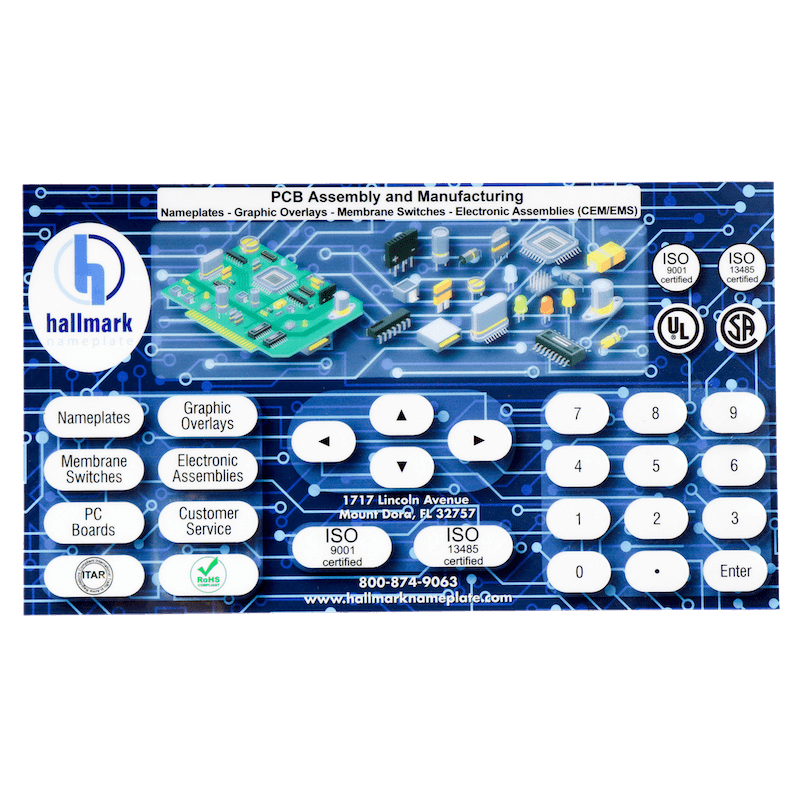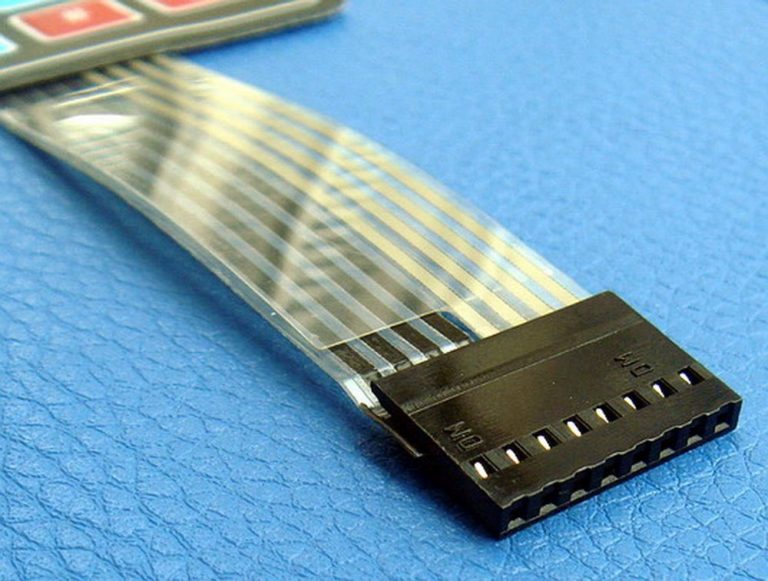Ensuring Quality and Longevity with Membrane Switches in Electronics
Ensuring Quality and Longevity with Membrane Switches in Electronics
Blog Article
Comprehending the Importance of Membrane Switches in Interface
Membrane buttons are essential parts in the design of efficient individual interfaces, facilitating not only capability but likewise enhancing visual appeal and user interaction. As we explore the future trends and various benefits associated with Membrane technology, it ends up being clear that these switches are more than just elements; they stand for a convergence of advancement and usefulness.
What Are Membrane Switches?

The spacer layer, which includes adhesive properties, permits the splitting up of the circuit layer from the overlay, ensuring that the button stays in a non-activated state till pushed. When stress is related to the overlay, it presses the spacer layer, linking the space and completing the circuit in the underlying layer. This layout not just reduces the physical space needed for typical mechanical switches however additionally boosts the durability of the tool, as Membrane switches are generally immune to dirt, dampness, and other ecological variables.
Typically located in applications varying from customer electronics to clinical tools, Membrane switches are essential to modern technology, giving a efficient and easy to use interface that aligns with contemporary style requirements.
Advantages of Membrane Switches
While many switch innovations exist, Membrane Switches deal unique benefits that make them specifically preferable in various applications. One of the main advantages of Membrane buttons is their small style, which permits for space-saving applications in devices where property is limited. Their thin account not only improves visual charm but additionally helps with light-weight building and construction.
One more considerable advantage is their resistance to environmental variables. Membrane buttons are generally sealed against moisture, dust, and pollutants, making them optimal for usage in demanding environments, such as clinical gadgets and industrial equipment. This durability extends the life expectancy of the button, lowering maintenance costs and improving dependability.
In addition, Membrane switches can be customized to fulfill specific design requirements, including special graphics and colors that boost individual interaction. Their tactile comments alternatives can additionally be tailored to supply a rewarding customer experience. Additionally, Membrane switches are cost-effective, especially in high-volume applications, as they can be produced efficiently.
Applications in Different Industries

In the customer electronic devices field, Membrane switches prevail in devices such as microwaves, washing machines, and push-button controls. Their tactile comments and aesthetic choices enhance user experience while offering a smooth, modern appearance. Additionally, automobile manufacturers utilize Membrane switches in dashboard controls and infomercial systems, where room is restricted, and individual engagement is critical.
Moreover, the commercial market leverages Membrane switches in control panels for equipment and tools, enabling instinctive operation in typically harsh environments. Their i loved this resistance to chemicals and moisture makes sure long life and dependability in these applications. Overall, the flexibility of Membrane Switches contributes dramatically to their widespread usage, making them crucial in various technical domain names.
Design Factors To Consider for Membrane Switches

When developing Membrane switches, a number of essential factors to consider have to be taken into consideration to guarantee optimal capability and customer experience. The selection of materials is important; picking long lasting, top notch substrates can boost the switch's long life and resistance to ecological elements such as dampness and temperature level variations.
Secondly, the design of the graphic overlay ought to focus on clearness and convenience of usage. Symbols and message must be understandable, and the format must facilitate intuitive interaction (membrane switches). Furthermore, tactile feedback is vital; integrating a tactile dome or various other devices can boost the user experience by offering physical confirmation of activation
Another essential aspect is the switch's electric efficiency. Developers should make sure that the conductive traces are effectively developed to reduce resistance and stay clear of signal disturbance. This involves examining the required actuation force and ensuring compatibility with the electronic elements they will certainly interface with.

Future Patterns in Membrane Technology
As modern technology proceeds to development, Membrane switches are poised to develop significantly, driven by developments in products and making methods. One find this emerging trend is the unification of sophisticated products, such as versatile substratums and conductive inks, which boost sturdiness and minimize the general weight of Membrane buttons. These products not just improve the responsive response however also allow for the design of switches that can hold up against harsher ecological conditions.
Additionally, the assimilation of touch-sensitive innovations is changing typical Membrane Switches right into more interactive user interfaces. Capacitive touch sensing units installed within Membrane switch panels can provide an extra responsive and intuitive individual experience, lining up with the growing demand for streamlined, modern-day layouts in customer electronics.
Additionally, advancements in printing methods, such as digital and 3D printing, make it possible for rapid prototyping and personalization of Membrane switches. This versatility enables manufacturers to react faster to market needs and consumer preferences.
Last but not least, sustainability is becoming a significant focus, with manufacturers exploring environment-friendly materials and processes. As these trends unravel, the future of Membrane technology guarantees boosted functionality, visual charm, and ecological responsibility, solidifying their function in innovative user interfaces throughout numerous markets.
Verdict
In final thought, Membrane Switches stand for an essential element in the layout of individual interfaces, integrating functionality with visual adaptability. Their advantages, consisting of toughness and resistance to ecological factors, make them appropriate for diverse applications across numerous markets. In addition, thoughtful design factors to consider boost user communication and experience. As advancements in innovation proceed, the evolution of Membrane switches is anticipated to more refine interface, driving innovation and improving use in an increasingly intricate technological landscape.
Membrane switches are indispensable parts in the design of effective individual interfaces, assisting in not just functionality yet likewise enhancing aesthetic charm and user interaction.Membrane Switches offer as an important part in various customer interfaces, promoting a seamless interaction between customers and digital devices.While numerous button innovations exist, Membrane Switches deal unique advantages site link that make them particularly preferable in different applications.Moreover, Membrane buttons can be personalized to satisfy particular layout demands, including unique graphics and colors that boost customer communication.In verdict, Membrane Switches stand for a crucial part in the design of user interfaces, combining functionality with aesthetic versatility.
Report this page